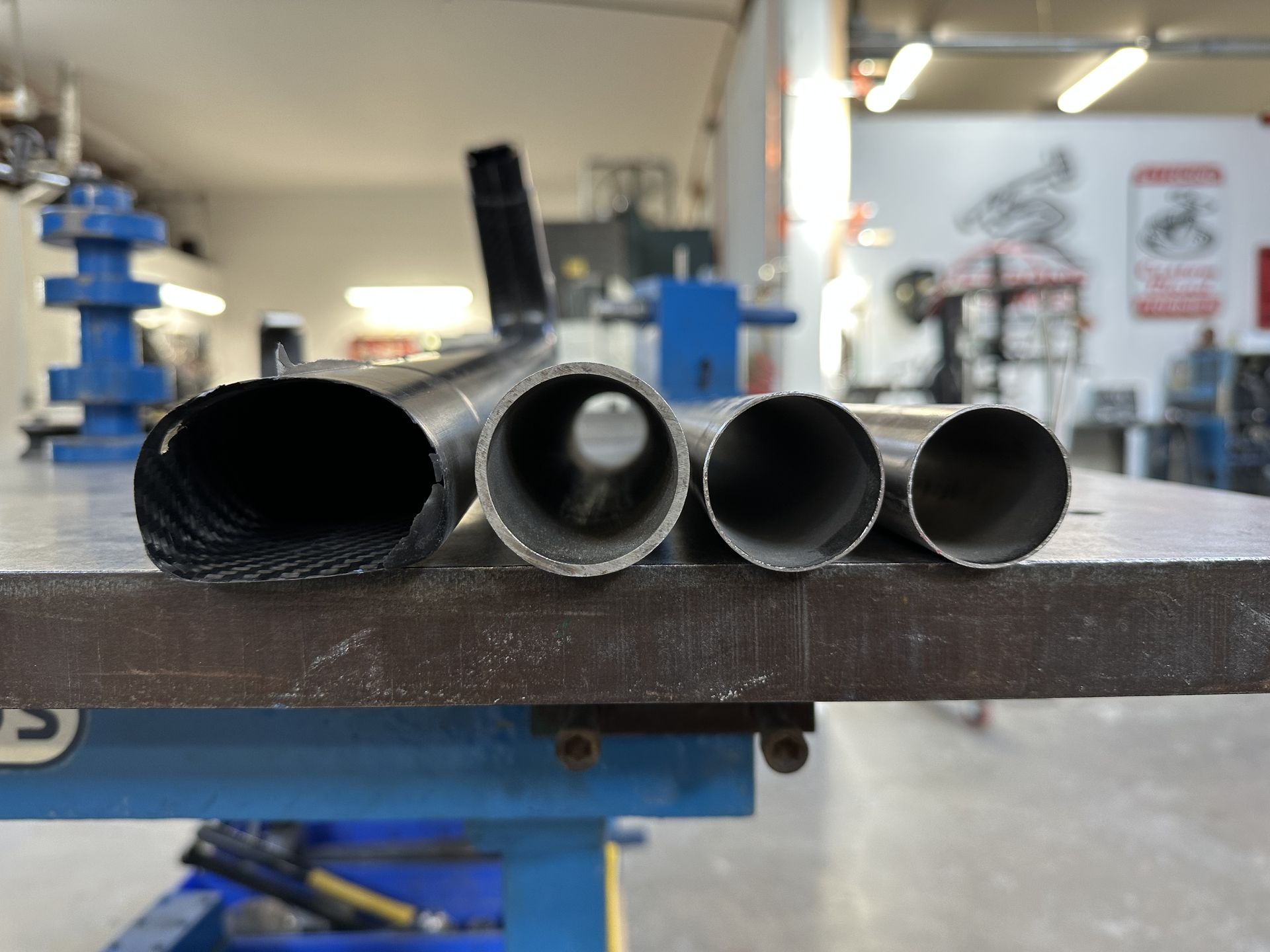The Fourth Dimension - Layup for the Layman
If you have an interest in high-end bikes, bike tech, bike design, or hang out with bike geeks, you may have heard the term “Layup”, or “layup schedule”. Other variants are “laminate design” or “laminate schedule”. Ever wonder what that means, or why it matters?
One of the most exciting and interesting parts of designing carbon fiber frames is the anisotropic nature of carbon fibers. Metal's isotropic properties limit the tuning of frame characteristics to material (steel, titanium, aluminum), tube wall thickness, and tube diameter/shape. With carbon fiber you get all those variables plus fiber orientation - the “fourth dimension”. And it is because of this, that we can get so much closer to the mythical "laterally stiff and vertically compliant".
Bike frame design and material
Before we get started, let's isolate few key areas of bicycles design for this discussion; weight, durability, and feel (ride characteristics). The material used and the way it is used are solely responsible for the weight and durability of the bike frame. But there are other elements that will influence the feel of the frame, such as frame geometry, and tire selection among others. For the sake of this article we’ll be focusing only on the frame material, and we’ll leave the other items for another day.
When looking at a frame made of any material, it’s feel (stiffness and damping), weight and durability are a consequence of tube diameter, and thickness of the tube. While tube shape does play a small role in tube design, it is used primarily as an aesthetic design choice, and a means to differentiate the appearance of the frame. As the diameter of the tube goes up, the stiffness goes up, but so does the weight. To counteract the increasing weight of larger diameter tubes, designers typically reduce the thickness of the tube wall. But reducing the thickness of the tube wall also reduces durability, so it can only be done to a certain extent.

From Left to Right; Carbon, Aluminum, Titanium, Steel
When working with metal tubes; steel, aluminum and titanium, the modulus does not vary within each material across different alloys. Metals have equal strength and stiffness when measured in different directions. ie pull, bend, squish, etc. This is referred to as isotropic.
So when designing a metal frame, the designer only has the three variables to work with; diameter, wall thickness, and shape. But with carbon fiber, we get to add a few more variables allowing for another level of fine-tuning. One is modulus; carbon fiber is available in different modulus from standard to high. The other is fiber orientation.
Carbon is anisotropic. That means it has different characteristics when measured in different directions. Carbon’s primary strength is in tension, pulling it from end to end. If you bend it or twist it, it does not resist the force in any meaningful way. So this is addressed by making stacks of really thin carbon fiber plies, each oriented in a different direction. This is referred to as a laminate.
The direction, number of plies, and order of the plies is referred to as a laminate schedule. Designers can also combine different modulus materials in the stack. But there is a caveat, as modulus goes up, strength goes down. So it’s up to the designer to balance or blend the materials modulus or stiffness according to the frame design goals.
In addition to the direction of the fibers in each ply, there are also ply shapes. And because of the specificity available to the designer, they can add just the material needed for any location with only the characteristics needed for the load applied to the frame in that area, this is called optimization. So if a designer is working on a specific part of the frame that undergoes forces in a specific direction, they can optimize the fiber angles only addressing that load and leaving out any fibers that don’t. Now that’s control!
Why it matters
Because no bike can be totally stiff, AND totally comfortable, or super light, AND super durable.
Have you ever heard the term “laterally stiff and vertically compliant”? It’s usually referred to as the ultimate combination of efficiency when pedaling, yet comfortable on the long days. Metal frames fall on a continuum between soft and stiff, and it’s up to the designer to find the right balance for a given design. With carbon fiber, it’s more achievable, because of the anisotropic nature of carbon, designers can create a fame this is stiff in one direction and soft in another.
Other advantages to designing with carbon fiber are balancing weight and stiffness, or durability characteristics. If a rider has specific goals, the designer can fine-tune for those goals. In our case at Pursuit Cycles, we have three designed and tested standard laminate designs. We choose the laminate design based on each customer, and can modify or tweak each for even more fine-tuning when needed.